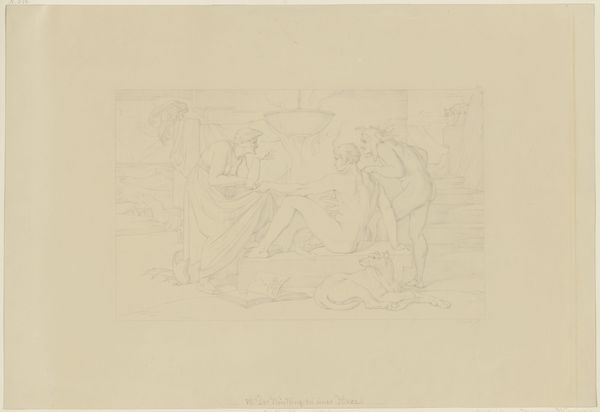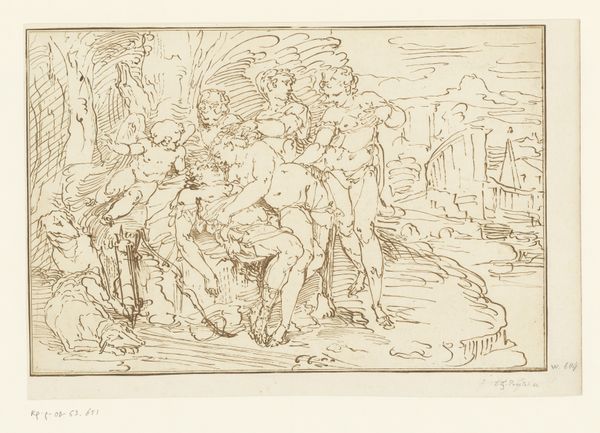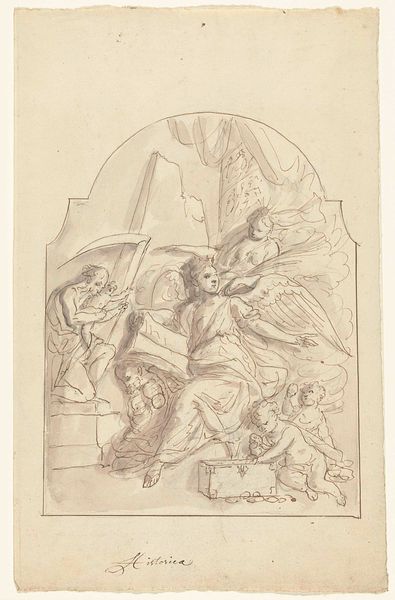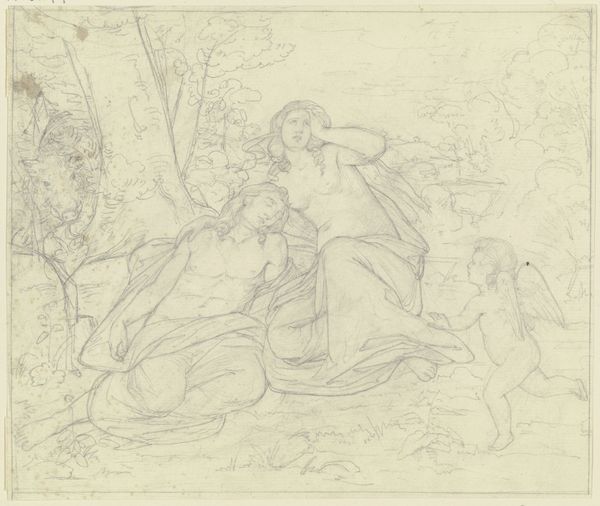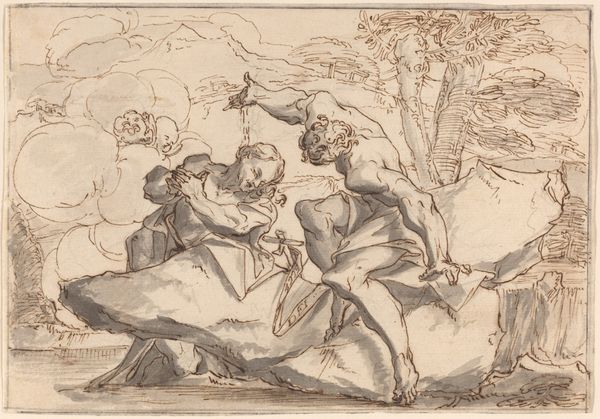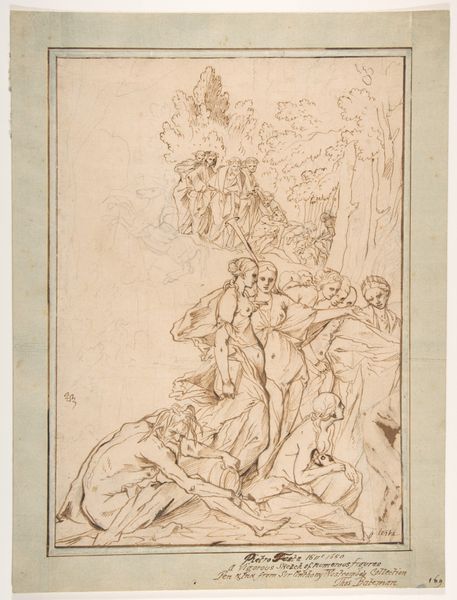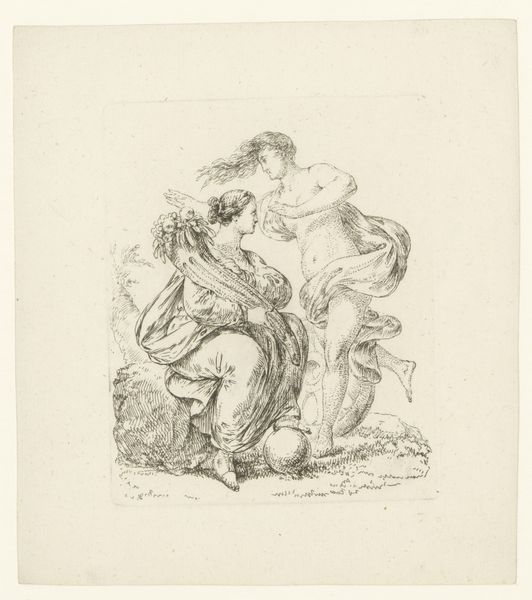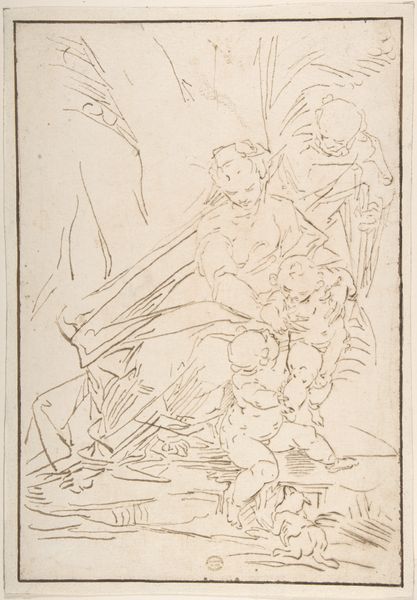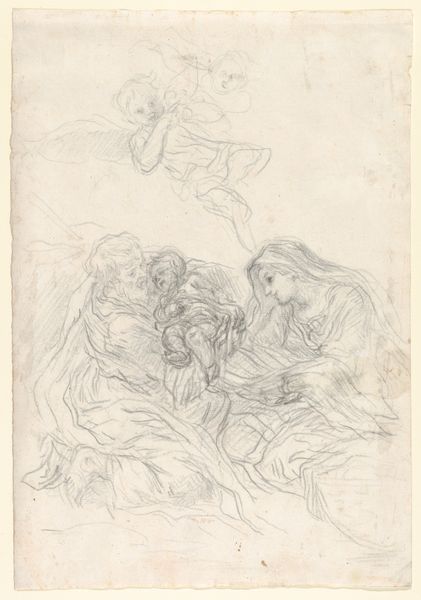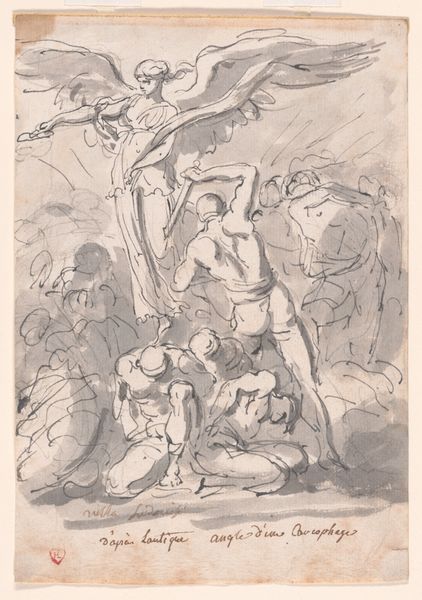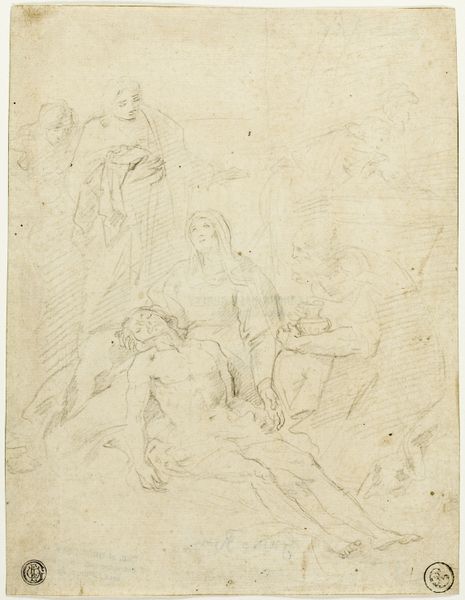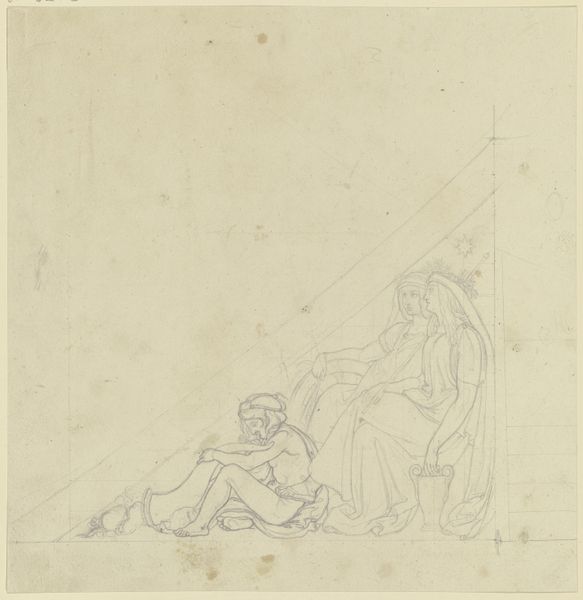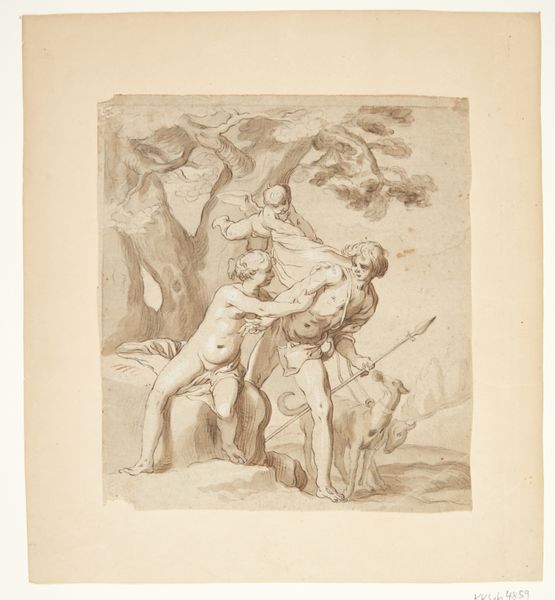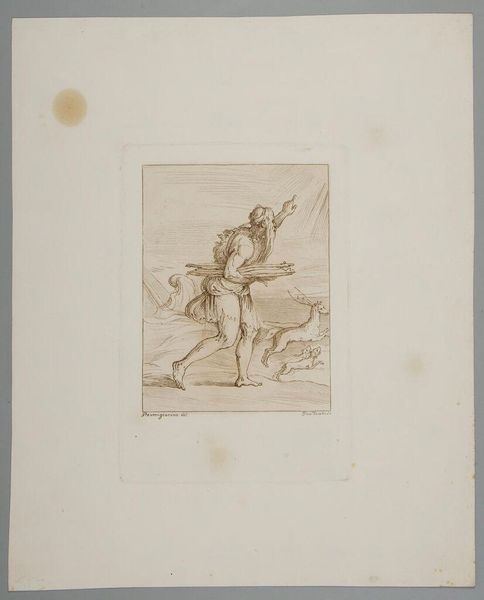
drawing, ink, pen
#
drawing
#
figuration
#
ink
#
pen-ink sketch
#
pen
#
history-painting
#
academic-art
Dimensions: height 213 mm, width 136 mm
Copyright: Rijks Museum: Open Domain
Curator: Looking at this ink and pen drawing, "Christus aan het kruis", created sometime between 1810 and 1851 by Étienne Achille Réveil, what catches your eye? Editor: There's an almost unsettling stillness to it, a quiet horror. The pen lines are so delicate, almost fragile, yet the subject is so immense, so heavy with suffering. Curator: Absolutely. Réveil captures a familiar scene of religious history painting with what feels like restrained energy. It’s very academic. We see Christ on the cross, of course, and figures that suggest perhaps Mary and Mary Magdalene at the base, mourning. Editor: I'm interested in how the delicate rendering softens what would otherwise be a purely brutal and tragic image. I mean, yes, it speaks of sacrifice and mourning, but it almost domesticates the trauma. Does this render the history of the suffering of Jesus palatable for academic elites of the era? What does that history have to do with broader contexts of class and power at play? Curator: That's a really sharp reading. You see, I get lost in the imagined atmosphere. Look how wispy the clouds are, how tentative the marks defining Christ’s musculature. It’s as if Réveil is reaching out to grasp something intangible, the very spirit leaving the body. There's a tenderness that complicates the spectacle of pain. Editor: Yes, it is evocative. I also find it problematic, though. Consider how art history tends to divorce suffering and victimhood of spiritual leaders like Jesus, situating these actors above historical processes and struggles of other, equally deserving, communities. How might this work participate in such abstraction? Curator: You know, maybe it’s the unfinished quality. You get the sense that Réveil didn’t want to present an authoritative answer. Instead, the viewer is left with this feeling of questioning, like a lingering echo after the sermon. Editor: Ultimately, it reminds me that we bring our own questions, doubts, and beliefs to encounters with art. Pieces like this urge us to confront not just what we see, but what we seek.
Comments
No comments
Be the first to comment and join the conversation on the ultimate creative platform.
